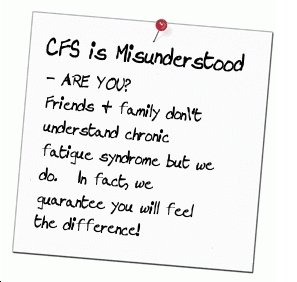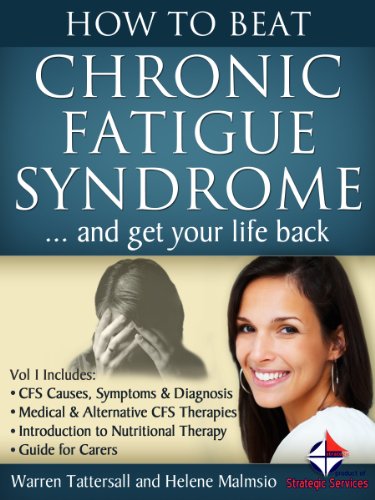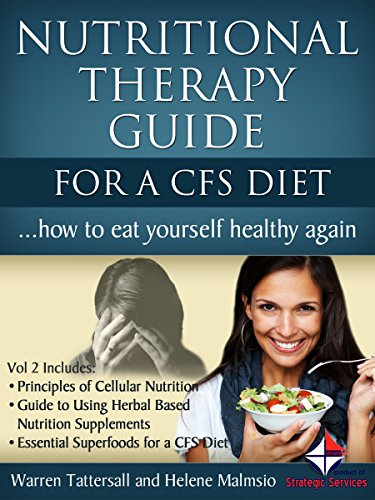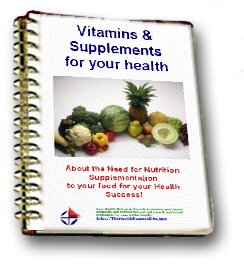Do we get enough exercise from our daily activities?
Most Americans get little vigorous exercise at work or during leisure hours. Today, only a few jobs require vigorous physical activity. People usually ride in cars or buses and watch TV during their free time rather than be physically active.
Activities like golfing and bowling provide people with some benefit. But they do not provide the same benefits as regular, more vigorous exercise.
Evidence suggests that even low- to moderate-intensity activities can have both short- and long-term benefits. If done daily, they help lower your risk of heart disease.
Such activities include pleasure walking, stair climbing, gardening, yardwork, moderate to heavy housework, dancing and home exercise. More vigorous exercise can help improve fitness of the heart and lungs, which can provide even more consistent benefits for lowering heart disease risk.
Today, many people are rediscovering the benefits of regular, vigorous exercise - activities like swimming, brisk walking, running, or jumping rope. These kinds of activities are sometimes called "aerobic" - meaning the body uses oxygen to produce the energy needed for the activity. Aerobic exercises can condition your heart and lungs if performed at the proper intensity for at least 30 minutes, 3-4 times a week.
But you don't have to train like a marathon runner to become more physically fit! Any activity that gets you moving around, even it it's done for just a few minutes each day, is better than none at all.
For inactive people, the trick is to get started. One great way is to take a walk for 10-15 minutes during your lunch break. Other ideas in this pamphlet will help you get moving and living a more active life.
What are the benefits of regular physical activity?
These are the benefits often experienced by people who get regular physical activity.
Feeling better
Regular physical activity -
• gives you more energy
• helps in coping with stress
• improves your self-image
• increases resistance to fatigue
• helps counter anxiety and depression
• helps you to relax and feel less tense
• improves the ability to fall asleep quickly and sleep well
• provides an easy way to share an activity with friends or family and an opportunity to meet new friends
Looking better
Regular physical activity
• tones your muscles
• burns off calories to help lose extra pounds or helps you stay at your desirable weight
• helps control your appetite
You need to burn off 3,500 calories more than you take in to lose 1 pound. If you want to lose weight, regular physical activity can help you in either of two ways.
First, you can eat your usual amount of calories, but be more active. For example: A 200-pound person who keeps on eating the same amount of calories, but decides to walk briskly each day for 1 1/2 miles will lose about 14 pounds in 1 year. Or second, you can eat fewer calories and be more active. This is an even better way to lose weight.
About three-fourths of the energy you burn every day comes from what your body uses for its basic needs, such as sleeping, breathing, digesting food and reclining. A person burns up only a small amount of calories with daily activities such as sitting. Any physical activity in addition to what you normally do will burn up extra calories.
The average calories spent per hour by a 150-pound person are listed below. (A lighter person burns fewer calories; a heavier person burns more.) Since exact calorie figures are not available for most activities, the figures below are averaged from several sources and show the relative vigor of the activities.
Activity Calories burned
Bicycling 6 mph 240 cals./hr.
Bicycling 12 mph 410 cals./hr.
Cross-country skiing 700 cals./hr.
Jogging 5 1/2mph 740 cals./hr.
Jogging 7 mph 920 cals./hr.
Jumping rope 750 cals./hr.
Running in place 650 cals./hr.
Running 10 mph 1280 cals./hr.
Swimming 25 yds/min. 275 cals./hr.
Swimming 50 yds/min. 500 cats./hr.
Tennis-singles 400 cals./hr.
Walking 2 mph 240 cals./hr.
Walking 3 mph 320 cals./hr.
Walking 41/2 mph 440 cals./hr.
The calories spent in a particular activity vary in proportion to one's body weight. For example, a 1 00-pound person burns 1/3 fewer calories, so you would multiply the number of calories by 0.7. For a 200-pound person, multiply by 1.3.
Working harder or faster for a given activity will only slightly increase the calories spent. A better way to burn up more calories is to increase the time spent on your activity.
Working better
Regular physical activity -
• helps you to be more productive at work
• increases your capacity for physical work
• builds stamina for other physical activities
• increases muscle strength
• helps your heart and lungs work more efficiently
Consider the benefits of a well-conditioned heart:
In 1 minute with 45 to 50 beats, the heart of a well-conditioned person pumps the same amount of blood as an inactive person's heart pumps in 70 to 75 beats. Compared to the well-conditioned heart, the average heart pumps up to 36,000 more times per day, 13 million more times per year.
Feeling, looking, and working better - all these benefits from regular physical activity can help you enjoy your life more fully.
Comparing the benefits and the risks
Should you begin a regular exercise program? Consider the ways physical activity can benefit you and weigh them against the possible risks.
Potential benefits
• more energy and capacity for work and leisure activities
• greater resistance to stress, anxiety and fatigue, and a better outlook on life
• increased stamina, strength and flexibility
• improved efficiency of the heart and lungs
• loss of extra pounds or body fat
• help in staying at desirable weight
• reduced risk of heart attack
Potential risks
• muscle or joint injuries
• heat exhaustion or heat stroke on hot days (rare) aggravation of existing or hidden heart problems
Should I consult a doctor before
I start an exercise program?
Most people do not need to see a doctor before they start since a gradual, sensible exercise program will have minimal health risks. However, some people should seek medical advice.
Use the following checklist to find out if you should consult a doctor before you start or significantly increase your physical activity.*
Mark those items that apply to you:
Your doctor said you have a heart condition and recommended only medically supervised physical activity.
During or right after you exercise, you frequently have pains or pressure in the left or mid-chest area, left neck, shoulder or arm.
You have developed chest pain within the last month.
You tend to lose consciousness or fall over due to dizziness.
You feel extremely breathless after mild exertion.
Your doctor recommended you take medicine for your blood pressure or a heart condition.
Your doctor said you have bone or joint problems that could be made worse by the proposed physical activity.
You have a medical condition or other physical reason not mentioned here which might need special attention in an exercise program. (For example, insulin-dependent diabetes.)
You are middle-aged or older, have not been physically active, and plan a relatively vigorous exercise program.
If you've checked one or more items, see your doctor before you start. If you've checked no items, you can start on a gradual, sensible program of increased activity tailored to your needs. If you feel any of the physical symptoms listed above when you start your exercise program, contact your doctor right away.
*This checklist has been developed from several sources, particularly the Physical Activity Readiness Questionnaire, British Columbia Ministry of Health, Department of National Health and Welfare, Canada (revised 1992).
What if I've had a heart attack?
Regular, brisk physical activity can help reduce your risk of having another heart attack. People who include regular physical activity in their lives after a heart attack improve their chances of survival. Regular exercise can also improve the quality of your life - how you feel and look. It can help you do more than before without pain (angina) or shortness of breath.
If you've had a heart attack, consult your doctor to be sure you are following a safe and effective exercise program. Your doctor's guidance Is very Important because It could help prevent heart pain and for further damage from overexertion.
the A to Z directory of dealing with Health Problems & Self Care Strategies for natural remedies to your health issues.

Subscribe to get your weekly "Health Success Magazine" with a new complete & comprehensive Health Report in every edition!

to “Your Health Success”
our weekly F’R’E’E’ Newsletter
If you would like a free no-obligation private consultation or to contact Warren Tattersall for more information, please click here >> Contact Us
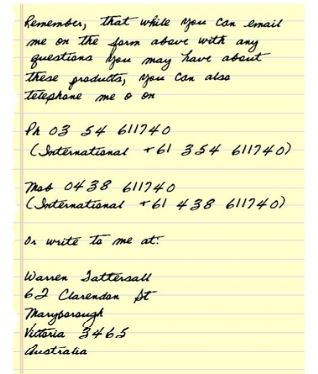
Click the books above to learn more about how we treat CFS naturally, to get your life back!
You will find many assorted Health Reports available for download free to you on this website!
Our free Health Success Reports are each available for you to download when you subscribe to receive them and their 7 part eCourse.
You can unsubscribe at any time, but we are sure you will want to receive all the email lessons of these informative ecourses.
Read more HERE to select the REPORT subjects of most interest (or concern) to you.






